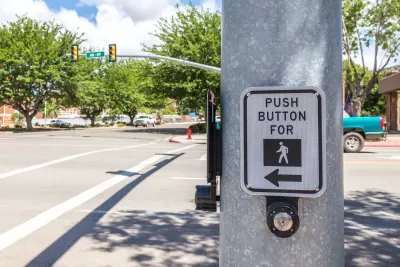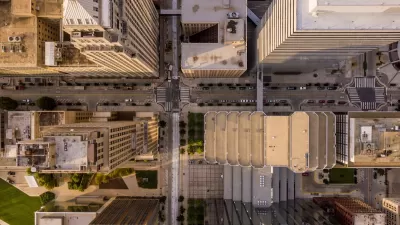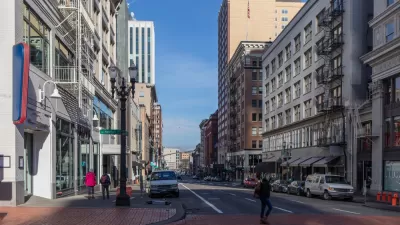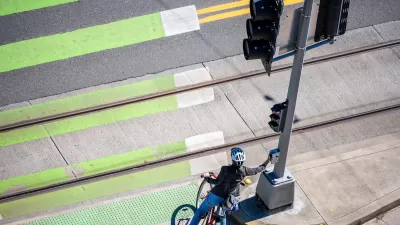Road safety advocates say the 2021 infrastructure bill doesn’t fully commit to its stated goals to help cities eliminate pedestrian and cyclist deaths.

Funding safety improvements via the 2021 infrastructure law won’t be enough to eliminate road deaths in the United States, say experts who are urging policymakers to take more drastic action. As Maylin Tu writes in Smart Cities Dive, “According to Jennifer Homendy, chair of the National Transportation Safety Board, government leaders must champion public transit and increase safety for all road users, especially the most vulnerable.”
Advocates point out that the infrastructure law “perpetuates our nation’s bias for cars” and allocates insufficient funding to pedestrian and bike safety efforts. For example, states are only required to spend part of their Highway Safety Improvement Program on safety improvements if pedestrian and bicyclist fatalities make up 15 percent or more of traffic fatalities.
“But all the rest of their money can go to create more problems that need to be fixed by these little bitty programs in the future,” says Beth Osborne, vice president for transportation and thriving communities at Smart Growth America. And while federal agencies are starting to recognize the increased risks to pedestrians posed by larger vehicles, car safety testing still largely focuses on the safety of the people inside the car.
FULL STORY: Getting to zero traffic fatalities will take more than infrastructure funds, experts say

Planetizen Federal Action Tracker
A weekly monitor of how Trump’s orders and actions are impacting planners and planning in America.

San Francisco's School District Spent $105M To Build Affordable Housing for Teachers — And That's Just the Beginning
SFUSD joins a growing list of school districts using their land holdings to address housing affordability challenges faced by their own employees.

The Tiny, Adorable $7,000 Car Turning Japan Onto EVs
The single seat Mibot charges from a regular plug as quickly as an iPad, and is about half the price of an average EV.

Seattle's Plan for Adopting Driverless Cars
Equity, safety, accessibility and affordability are front of mind as the city prepares for robotaxis and other autonomous vehicles.

As Trump Phases Out FEMA, Is It Time to Flee the Floodplains?
With less federal funding available for disaster relief efforts, the need to relocate at-risk communities is more urgent than ever.

With Protected Lanes, 460% More People Commute by Bike
For those needing more ammo, more data proving what we already knew is here.
Urban Design for Planners 1: Software Tools
This six-course series explores essential urban design concepts using open source software and equips planners with the tools they need to participate fully in the urban design process.
Planning for Universal Design
Learn the tools for implementing Universal Design in planning regulations.
Smith Gee Studio
City of Charlotte
City of Camden Redevelopment Agency
City of Astoria
Transportation Research & Education Center (TREC) at Portland State University
US High Speed Rail Association
City of Camden Redevelopment Agency
Municipality of Princeton (NJ)





























